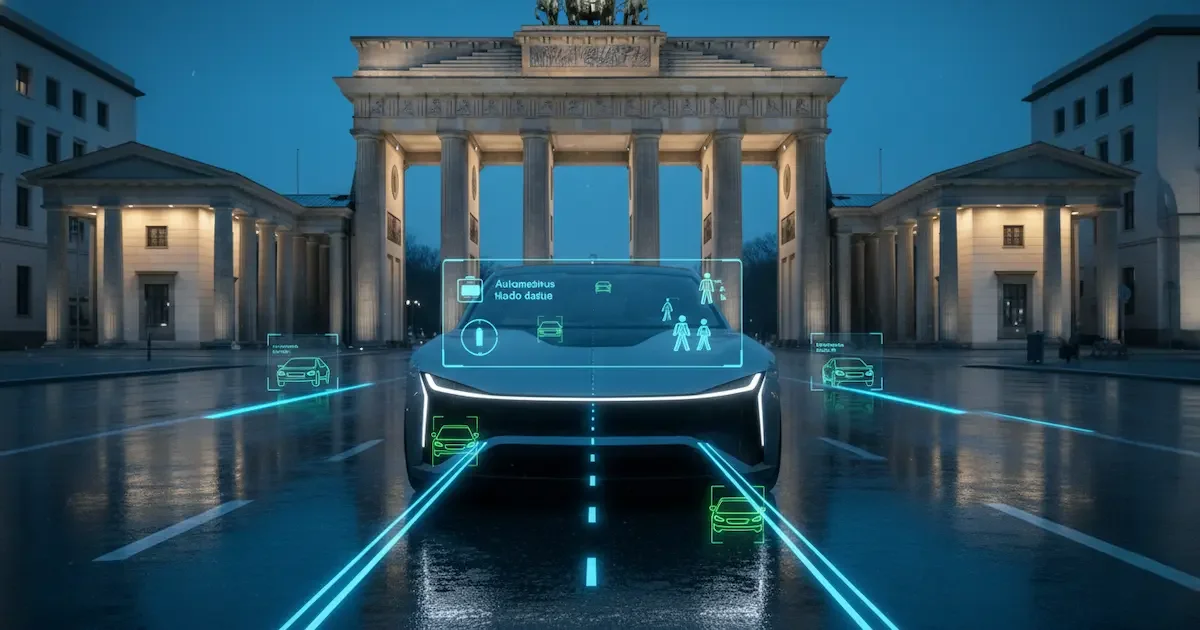China’s autonomous vehicle firms expand into Europe amid U.S. barriers
China’s self-driving tech players are quietly redrawing the global map. With the U.S. hardening rules on Chinese software and hardware in connected and autonomous vehicles, companies like QCraft, DeepRoute.ai, and Momenta are leaning into Europe—setting up HQs, striking pilots, and showing off at IAA Mobility in Munich. Think of it as a strategic lane change: when one highway closes, you merge onto the one that’s still moving.
Why Europe, why now?
Two reasons.
First, U.S. doors are narrower. Washington finalized a rule in January 2025 that effectively bars Chinese (and Russian) connected-vehicle tech from American roads. That doesn’t just hit sales; it complicates testing, data flows, and partnerships. If your autonomy stack relies on components or cloud pipelines deemed “covered,” you’re out. That’s a high wall to climb.
Second, Europe is opening—carefully. Brussels has been moving to harmonize a patchwork of national rules, backing cross-border testbeds from 2026, while UNECE regulations (like R157 for Level-3 ALKS) give suppliers a common technical baseline. The EU AI Act will still treat vehicle autonomy as “high-risk,” so audits, transparency, and safety cases won’t disappear—but at least the rulebook is getting clearer.
Who’s moving—and how
QCraft: Announced a European HQ in Germany alongside a partnership with Qualcomm, signaling plans to deliver its NOA (navigation-on-autopilot) and higher-level autonomy to EU markets. The timing around IAA Mobility 2025 wasn’t accidental; Europe’s car capital is also its best showroom.
DeepRoute.ai: Rolled out its IO 2.0 platform in Munich, highlighting a vision-language-action model meant to scale across markets. The subtext: a tech stack designed to be modular enough for Europe’s regulatory checks and OEM integrations.
Momenta: Cut a headline deal with Uber to begin Level-4 testing in Munich in 2026. It’s a classic beachhead move: start with a controlled urban zone, safety operators on board, then broaden. Europe gets the R&D spillover, Uber gets a path to robotaxis beyond the U.S./China tie-ups, and Momenta shows regulators it can play by local rules.
Europe’s upside—and friction
Europe offers three wins for these firms:
1. Rule clarity (by EU standards): You still face audits and conformity assessments under the AI Act and automotive safety regimes, but there’s a path to market if you do the paperwork and the safety engineering.
2. OEM proximity: From Germany to France, legacy carmakers are racing to bolt more intelligence into their line-ups. A competitive supplier who can shave BOM costs and accelerate features like NOA is welcome—if the cyber, data, and safety boxes are ticked.
3. Cost pressure: European players face tight margins and a consumer base that wants advanced features without luxury-car pricing. Chinese stacks have a reputation (fair or not) for aggressive cost-performance.
Now the friction:
· Fragmentation isn’t gone yet. Permits, data-handling rules, and municipal policies can still vary city to city. Harmonization is coming, but pilots will remain bespoke for a while.
· Geopolitics follows the code. Even with EU pathways, national security and data-sovereignty concerns don’t vanish. Expect scrutiny on where data lives, who trains the models, and how over-the-air updates are vetted.
· Local pushback. Some European startups and policymakers are already calling for safeguards to keep domestic players competitive as low-cost Chinese systems arrive.
What this means for India
India’s AV timeline is deliberately conservative—and that’s a strength. We’re focused on ADAS today, and on pragmatic autonomy tomorrow, in a traffic mix that would make most robotaxi demos sweat. Here’s the useful takeaway:
· Standards travel. If QCraft, DeepRoute, and Momenta harden their stacks to meet Europe’s safety and AI governance, that’s a template Indian regulators can study as we scale ADAS and pilot autonomy in controlled corridors (freight first, passenger later).
· Supplier leverage for OEMs in India. Tata, Mahindra, Maruti-Suzuki, and new EV entrants will have more off-the-shelf autonomy modules to evaluate—camera-heavy, cost-sensitive, tested on complex urban roads. The price/performance curve will bend in our favour. (Evidence: China’s cost advantage and saturated home market pushing expansion.)
· Data governance will be the make-or-break. If we adopt European-style high-risk AI controls and clear safety cases, we can invite more pilots without importing unnecessary risk. Translate that into Indian standards and you get competitive tech with accountability built in.
The big picture
This isn’t just about who gets robotaxis first. It’s about who writes the operating manual for autonomous mobility. The U.S. chose security first, Europe is choosing “safety-with-access,” and China is choosing scale. Chinese AV firms expanding into Europe are betting that compliance plus cost can beat incumbency. Whether they’re right will depend on the next two years of pilots, audits, and real-world miles.
For Indian readers: watch the European trials closely. The winners there will likely shape the platforms—and supplier menus—our OEMs pick from next.
